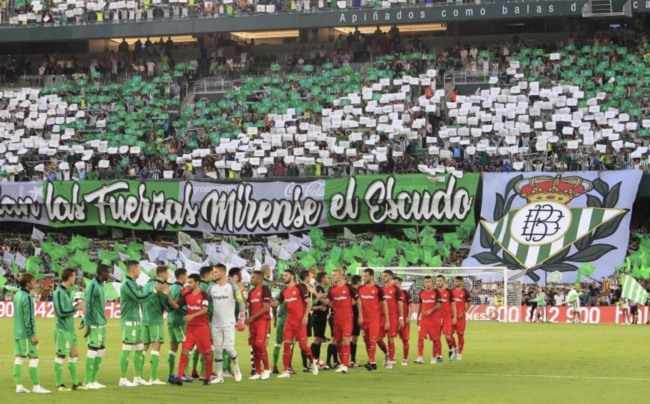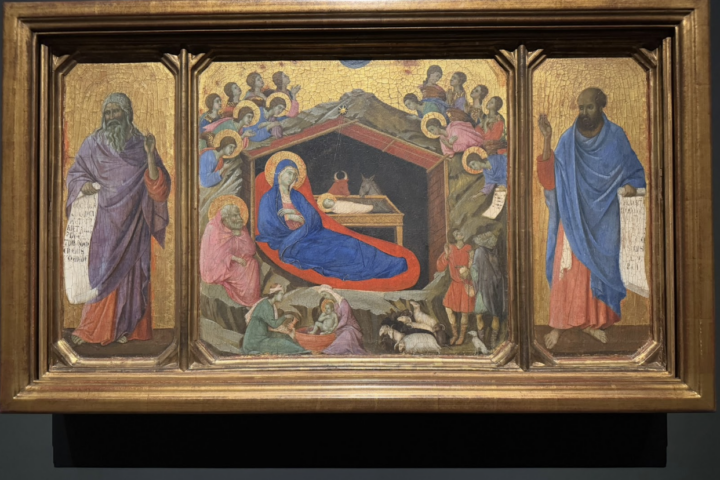Real Betis and Sevilla FC, two major league clubs in a tiny city, divide and define identity in Seville. Coursing through the veins of everyone in the capital of Andalucia is a fiery passion for the game of football and the team they love. Since the early 1900s, when Betís began as a breakaway from Sevilla Football Club, the hatred between the two clubs has been tangible. One could say the rivalry’s roots go further back, embedded in the city’s history. The name Betis is older than the name Sevilla – 2,000 years ago, this was the name the Romans gave to the river dividing the city (today it is known as the Guadalquivir). That divide is real – on one side is Triana, where many Betís fans reside. Historically, Triana has been the more blue-collar part of the town. Seville’s famous ceramics industry has lived in Triana for hundreds of years. On the other side is Seville, the much more known and polished side of the city, home to the royal family, fine restaurants and museums, and by reputation, where most Sevilla fans reside. Like Brooklyn relative to Manhattan, Triana has always been in the shadow of the antique Spanish city. Additionally, like Brooklyn, Triana has become a trendy place to live with terrific cafés and nightlife.
Betis has grown into its own in recent years, surpassing Sevilla in the league table and reaching new heights. The buzz in its 60,000-seat stadium is not only exciting but also backed up by the success of the team. The team has blossomed, much like Triana has in past years, and I could feel that confidence in the stadium as I watched them cruise to a victory over current second-place team Atlético Madrid. Betis fans see a more profound history in their club, both in its ancient name and in the iconic green and white stripes on their uniform, which match Seville’s flag. The team and its fans are much like Triana: underdogs, gritty and playing with a chip on their shoulder.
On the Seville side of the river, the team’s history reflects the more established feeling of the city it is named for. The club has more trophies than Betis, a history of finishing much higher in the league table and a stadium in the center of town. But the team is currently in a lull. Sitting 11th in the table is a little disappointing, given their recent success in Spanish and European competitions. Yet you wouldn’t know that from talking to the supporters. In fact, just about all you’d hear is how they are above Betís, embracing their reputation as the more polished side, with their deeper history and more established location.
Of course, the city is not precisely divided by fandom, with more than a few Betis fans residing in Seville and vice versa. Yet, where someone lives will not change their passion for their club. On matchdays, the Green and White of Betis will still litter the streets of Seville, and the Red and White of Sevilla F.C. will fill the streets of Triana. The hatred for the other side courses through the veins of those involved in the rivalry, with supporters even rooting against their club if it brings relegation or another massive detriment to the other side. It truly is a unique rivalry. This is no Madrid versus Barcelona. It is one city, united by land, divided by football.
Do Not Eat the Orange Fruit
A satisfying crunch under your foot is followed by a resounding “SPLAT” as the delicious smell of fresh orange citrus fills your nostrils. As you look up, you see a lush green tree full of bright, delightful-looking fruit. You reach up and pick one, but be careful; don’t take a bite!
The Sevillan Orange Trees line the entire city, and everywhere you go, people are stumbling over or playing soccer with dozens of oranges on the ground. They’ve been a staple of the community since they were planted by the Moors 1,000 years ago, before the arrival of the Christians–in fact, orange trees have long been a part of Islamic culture since they emerged in the Arabian Peninsula in the seventh century. Over 40,000 trees line the streets, each with dozens of oranges waiting to be picked or falling to the ground and joining the pile at the base of the trunk. While the oranges may smell juicy and delicious, they are bitter and not fun to eat. The Moorish used the oranges as medicine to treat indigestion and to aid relaxation. Today, they are a popular ingredient in marmalade, which is made by boiling the peel and juice with sugar and water. The trees are a delightful and memorable piece of the Seville experience, and both the smell and shade they bring to the city are welcome sensations on a hot, muggy day.






